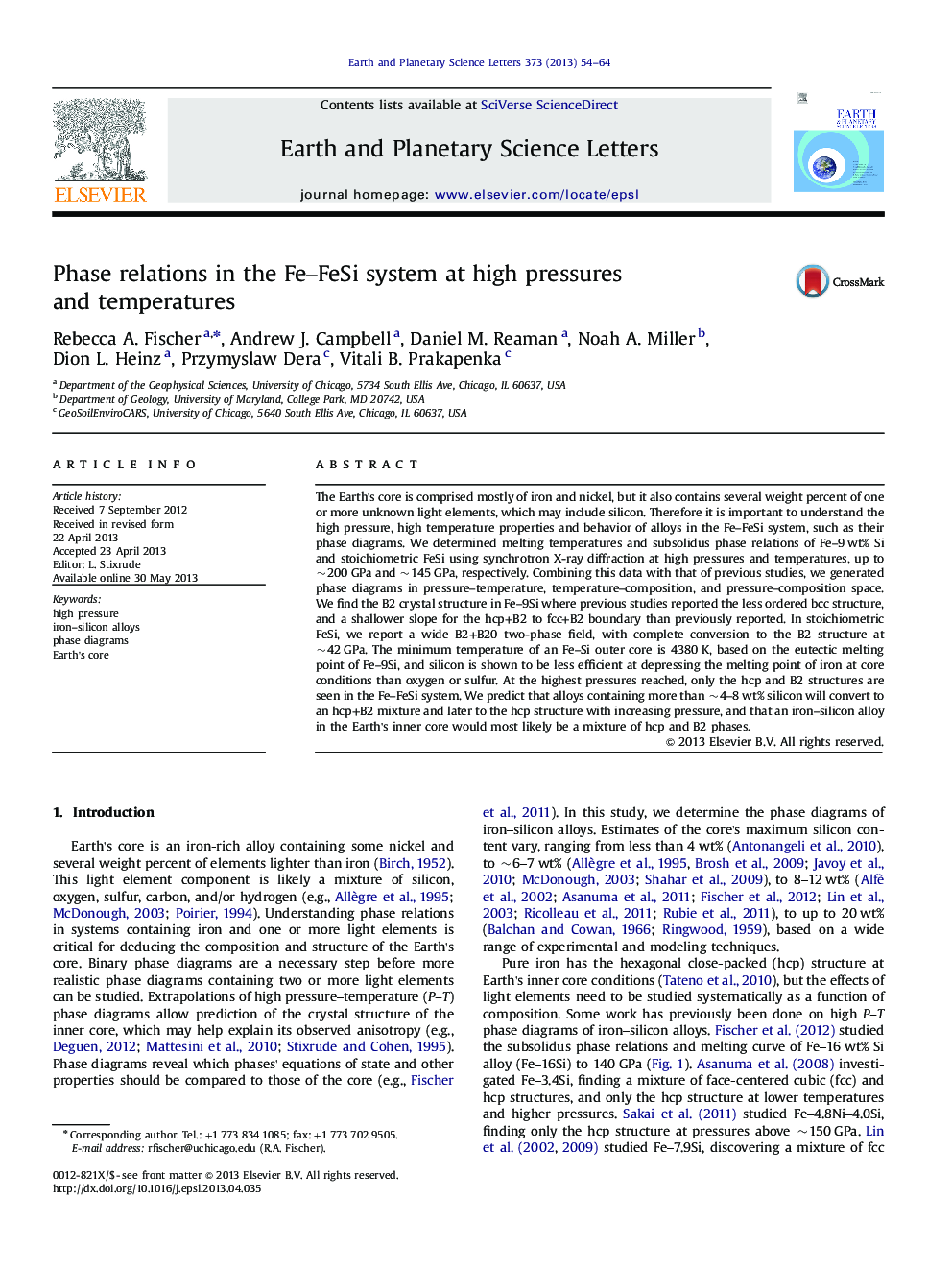| کد مقاله | کد نشریه | سال انتشار | مقاله انگلیسی | نسخه تمام متن |
|---|---|---|---|---|
| 4677064 | 1634782 | 2013 | 11 صفحه PDF | دانلود رایگان |

• We determined phase diagrams of Fe–9Si and FeSi to 200 and 145 GPa, respectively.
• The phase diagram of FeSi has a wide B20+B2 mixed phase field.
• Silicon is inefficient at depressing Fe melting curve at core pressures.
• T–X and P–X phase diagrams suggest transitions to B2+hcp then hcp for most alloys.
• Extrapolation of phase diagrams suggests B2+hcp mixture at inner core conditions.
The Earth's core is comprised mostly of iron and nickel, but it also contains several weight percent of one or more unknown light elements, which may include silicon. Therefore it is important to understand the high pressure, high temperature properties and behavior of alloys in the Fe–FeSi system, such as their phase diagrams. We determined melting temperatures and subsolidus phase relations of Fe–9 wt% Si and stoichiometric FeSi using synchrotron X-ray diffraction at high pressures and temperatures, up to ~200 GPa and ~145 GPa, respectively. Combining this data with that of previous studies, we generated phase diagrams in pressure–temperature, temperature–composition, and pressure–composition space. We find the B2 crystal structure in Fe–9Si where previous studies reported the less ordered bcc structure, and a shallower slope for the hcp+B2 to fcc+B2 boundary than previously reported. In stoichiometric FeSi, we report a wide B2+B20 two-phase field, with complete conversion to the B2 structure at ~42 GPa. The minimum temperature of an Fe–Si outer core is 4380 K, based on the eutectic melting point of Fe–9Si, and silicon is shown to be less efficient at depressing the melting point of iron at core conditions than oxygen or sulfur. At the highest pressures reached, only the hcp and B2 structures are seen in the Fe–FeSi system. We predict that alloys containing more than ~4–8 wt% silicon will convert to an hcp+B2 mixture and later to the hcp structure with increasing pressure, and that an iron–silicon alloy in the Earth's inner core would most likely be a mixture of hcp and B2 phases.
Journal: Earth and Planetary Science Letters - Volume 373, 1 July 2013, Pages 54–64